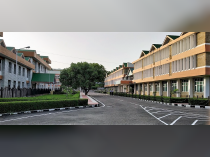Can I get admission for CSE with 73 marks in JEE mains? I belong to OBC category.
Asked about NIT Hamirpur - National Institute of Technology - B.Tech. in Computer Science and Engineering
-
1 Answer
-
I don't know your board marks, so I won't be able to tell you your actual rank. But, with 73 marks, just over the cut-off of 70 marks for OBC category of JEE mains this year, even if you have very good marks in your boards, your rank wont be below 40000 or 50000. With this rank you can only get admission into the CSE Integrated branch of NIT Hamirpur, and that too if you have the home state quota. This is all assuming you have very good marks in your board exams. If you don't then you won't get admission into this college in CSE.
Similar Questions for you
If candidates are facing issue in live photo capture, it can be due to mismatch from photo uploaded in Aadhar. For this, they need to visit the Aadhar update centre and get their current photo updated in the Aadhaar database.
The issue can also be due to any servor error/slow internet connectivity for which candidates can try uploading it after some time. Also, there can be a case of laptop/computer not supporting the webcame, for this, candidates can upload the photo using QR code provided in the application process.
Who work on the rocket-propelled vehicles, they apply the principles of Mathematics, Physics, and Material Science to solve challenges related to these vehicles. Rocket Scientists are involved in the process of design and development of the vehicles such as small drones, satellites, and commercial aeroplanes.
Yes, this field is considered hard. It is complex and demands high precision. There can be extreme consequences for minor errors. The overall field is extremely challenging as it requires to apply the basic scientific principles to design and develop rockets. It requires sophisticated engineering with careful material selection, and allows narrow margin for error.
The following are the qualification which can help you to become a rocket scientist:
· Bachelor's Degree such as B.Tech/B.E can take up to four years to complete.
· You can do a two years Master's Degree M.Tech/M.E./M.S. after graduation.
· For advanced level study in this field, you can also do Ph.D and Research.
Well, becoming a rocket scientist is a long-term commitment, and it depends on your education path and goals It takes almost 5 to 6 years with a bachelor's and 8 to 12 years if you want to study higher. Here below is how long it usually takes:
- Bachelor's degree: You have to study aeronautical engineering, aerospace engineering, mechanical engineering or physics. This usually takes almost 4 years.
- Master's degree: this is almost optional, but it will help you specialise in rocket science, propulsion or space technology. This usually takes 2 years more.
- PhD: this is optional for a research job; if you want to do high-level research, then it
Taking an Exam? Selecting a College?
Get authentic answers from experts, students and alumni that you won't find anywhere else
Sign Up on ShikshaOn Shiksha, get access to
- 65k Colleges
- 1.2k Exams
- 679k Reviews
- 1800k Answers

